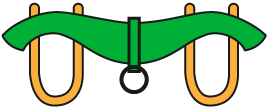TLH - Newsletter (englisch)
Used courtesy of Dickinson Cattle Co. USA

The Untold Early History of the Famous Fort Worth Herd
Erstellt am: von Longhorn
DCC Ranch e-News #263 - 12-28-21
by Darol Dickinson
In 1948 or thereabouts, my dad, Frank Dickinson, took me to the Fort Worth Stockyards. I was a little bare-footed kid walking the bricks of a world-class stockyard where millions of cattle had trod. It seemed big, like the whole world was filled with cattle and tall wooden corrals. To the east were two processing plants, Swift and Armor, also world-class. Large ranches shipped train car loads of cattle to Fort Worth to sell for either processing or breeding stock. Thousands of cattle moved through these yards weekly. The stockyards were a beehive of activity.
Dad worked as a salesman for the Nord-Hutchins Commission Company. Ranchers sent herds of cattle, consigning them to their most trusted commission company. Over 100 of these companies handled the private-treaty sales of millions of cattle. Dad would sort out a load, some of which would be sold to the packing plants and go up the big east ramp to their final service to humanity.
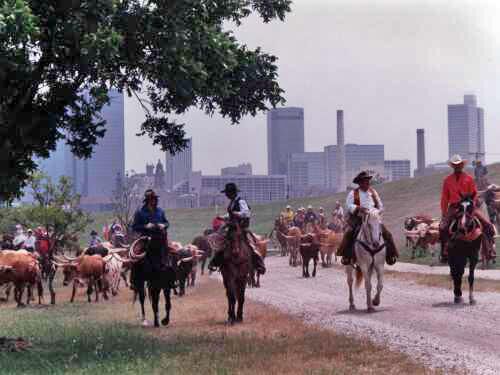
Bred cows had different values, so Dad would "bump" them to determine pregnancy. Those would sell for breeding stock if they were useful. He would "mouth" them to determine age, then decide what they were worth and who of his clients might want this inventory. The sorting for values was Dad's job. Getting the sort right was a very important service for the cattle owners and something Nord-Hutchins Commission Company was known for doing well.
As a little kid, my memory is stretching. I recall a red-rock office building on the north side of the yards where we entered. I liked to run the overhead walkways overlooking the waiting herds. There were no large pot semis or gooseneck trailers -- that was before their time.
Things changed. Just a few miles south at Burleson, a state-of-the-art livestock auction facility was built on the west side of old Highway 81. Competing livestock auctions sprouted up in ranching areas everywhere until the volume for Swift, Armor, and the Fort Worth Stockyards dwindled down to a few hundred acres of splinter-filled wooden corrals aging in the hot Texas sun. The fame and fortune that cattle brought to north Texas seemed to be a thing of the distant past, gone forever.
Famous saddle makers located on North Main Street--Leddys, L. White, and Ryans--dribbled from a stampede of cowhands buying gear to more of a tourist attraction for people who liked the smell of new leather.
Many tried to resurrect the Stockyards area, but even then, crime was rampant every night. The excitement and western romance were gone. The cattle were gone. The adrenaline was gone.
~ ~ ~ ~ ~ ~ ~
Originally settled in 1849 as an Army outpost along the Trinity River, Fort Worth was one of eight forts assigned to protect settlers from Indian attacks in the surrounding area.
The cattle industry was king for a generation of people working the Fort Worth leg of the historic Chisholm Trail, which ran from the 1860s to the 1870s.
Fort Worth became the heart of the State's ranching commerce when the Texas & Pacific Railway arrived in 1876. The railroad made the area a very important livestock center. In the years that followed, a city grew where an Army camp once stood. In 1887, the Union Stockyards were chartered in Fort Worth, which had earned the nickname "Cowtown" for its volume handling of livestock.
Fort Worth Union Stockyards opened for business on January 19, 1890, covering 206 acres. The Fort Worth Stockyards Company was created in 1893.
The first five decades of the 20th century were the most successful for the company. During World War I, foreign governments purchased draft animals, making Fort Worth the largest horse-and-mule market in the world. In 1944, sales exceeded 5 million head of livestock. Mules were shipped by boat across the oceans, standing tied for weeks--they can do that.
~ ~ ~ ~ ~ ~ ~
Fast forward a half-century to 1998 to the International Texas Longhorn Association (ITLA), with headquarters back then on the west side of Fort Worth. It was searching for creative ways to promote Texas Longhorns with public events, field days, and educational programs. Spurred by ITLA’s past-president Joe Valentine and then-current president Darol Dickinson, a downtown Drovers Cattle Drive right through Fort Worth was organized.
City fathers were not so confident about this new crazy idea. Valentine assured them the Texas Longhorns would be handled professionally and do no damage to the city. Still, they had visions of wild-eyed steers flying through storefront windows with death and destruction rampant in every direction. With more of Valentine’s persistent persuasion, however, they agreed--but ITLA had to purchase a major insurance policy to cover all anticipated damages.
The ITLA Board of Directors was solidly behind this high-risk promotion. On Memorial Day weekend 1998, after months of planning, loads of steers and saddle horses came in from several states. The herd gathered just north of the Fort Worth skyscrapers and west of the Trinity River Railroad Trestle Bridge. Ron Marquess of Ben Wheeler, TX, had loaded and delivered trailers of big-horned steers before dawn. Ron and his crew slept in their trucks awaiting first light. Steers were provided by Marquess, George McVay of Mt. Vernon, and R. D. Baldwin of Midlothian, TX. A couple dozen hands brought horses to contain the "stampede." Also a few trained riding steers were mixed in.
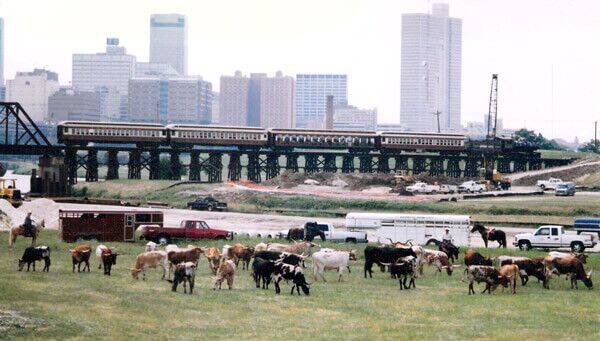
To say this was exciting would be an understatement. Two of the city councilmen watched from a safe distance, including Steve Murrin, the unofficial mayor of the Fort Worth Stockyards. I went ahead of the herd to photograph this historical event -- the first trail drive like this through Fort Worth since the 1880s.
As the steer herd settled and pointed east, some horses were a little jumpy, not totally ready for this up-town event. The first obstacle was moving the herd under the Trestle Bridge, when all of a sudden, chugging down the track came the regularly scheduled train, banging, clanking, and whistling along. Everyone expected the worst, but the calm steers quietly moseyed along parallel to the Trinity River.
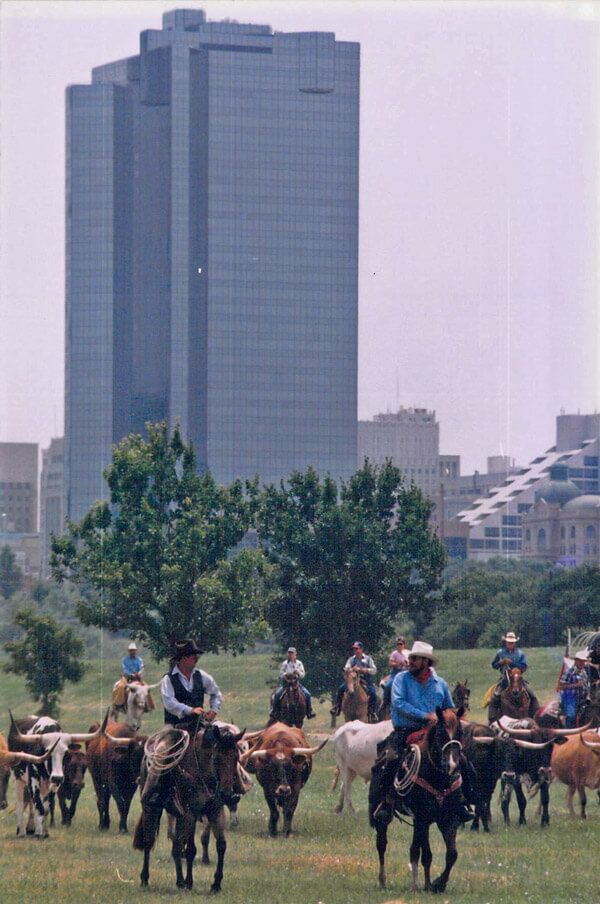
The first-only ITLA Drovers Cattle Drive lasted over an hour. It went without a hitch, winding around the Trinity Valley and on to the Stockyards corrals. People came from everywhere, rubber-necking and taking photos along Exchange Avenue. It was stunning. The crowd had never seen anything like this.
After the steers were corralled and munching on some new green hay, an 1880s costume event took place with food and fixings for all. The councilmen, including Murring, attended. Valentine and I proposed to the city leaders that a daily Texas Longhorn drive down Exchange Avenue would be the greatest tourism event of all times. Fort Worth--"cow town"--had lost its steam. The cattle were gone and the yards were rotting. This drive would be the resurrection Fort Worth needed. We thought this was a no-brainer, but the Council had reservations about financing, liability, and numerous other concerns.
The following day, the Fort Worth Star Telegram and local TV stations sent out positive news covering this first trail drive organized by ITLA. There was national recognition. With no broken windows, all was well.
Over a year passed. It appeared all was forgotten--and then it happened. On June 12, 1999, the Fort Worth Herd made its debut. ITLA had been working behind the scenes for members to donate big steers to the project. From the downtown Fort Worth Convention Center, 15 donated steers were driven to the Stockyards. Thousands of enthusiastic spectators watched these historic beasts saunter through the center of town, cheering excitedly and taking photos at every corner.

Today and every day at 11:30 a.m. and 4 p.m. on East Exchange Avenue, the Old West comes to life before your very eyes during the world's only twice-daily cattle drive. Real cowhands in period dress move Texas Longhorns down East Exchange Avenue in the Stockyards National Historic District.
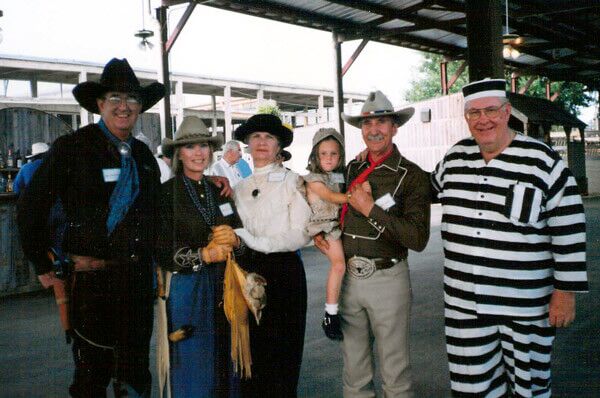
This tourism experience offers an unforgettable glimpse deep into the past. You'll hear the jingle of spurs, the cattle bawling, and the rhythm of the hooves. As the steers pass, a bygone era again comes to life.
Now, 23 years after the inaugural ITLA Texas Longhorn Drover event, the Fort Worth Herd is the second-most-popular tourism attraction in the state of Texas. Big-eyed afficionados of the West come from all over the world to watch real, live Texas Longhorns.
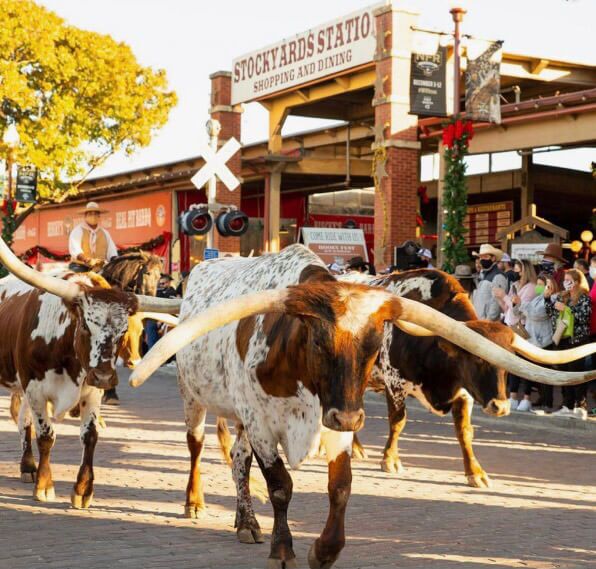
Dickinson Cattle Co., Inc.; 35000 Muskrat Rd.; Barnesville, OH 43713; 740 758-5050
